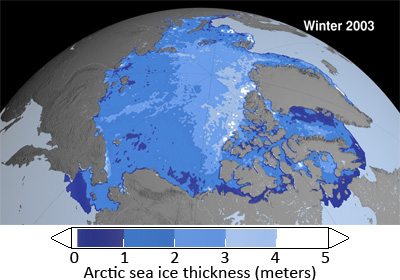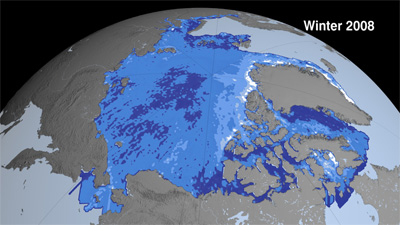September 1, 2009
Graph of the Day: Arctic Sea Ice Thickness in 2003 and 2008
If current melting trends continue, the Arctic Ocean is likely to be free of summer sea ice by 2015, according to research presented at a conference organized by the National Space Institute at Technical University of Denmark, the Danish Meteorological Institute and the Greenland Climate Center. The estimates, which are consistent with some models presented at the American Geophysical Union meeting in 2007, are based on the rapid thinning (loss of volume) of Arctic sea ice, which has outpaced shrinkage in extent, in recent years. Last month NASA announced that overall Arctic sea ice thinned about 17.8 centimeters (7 inches) a year, for a total of 67 cm (2.2 feet) over the four winters from 2004 to 2008. …

